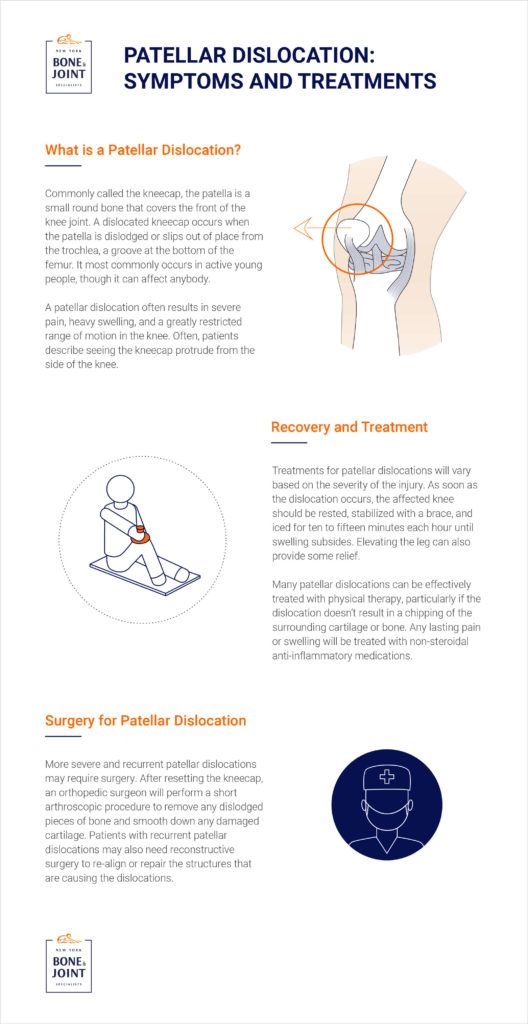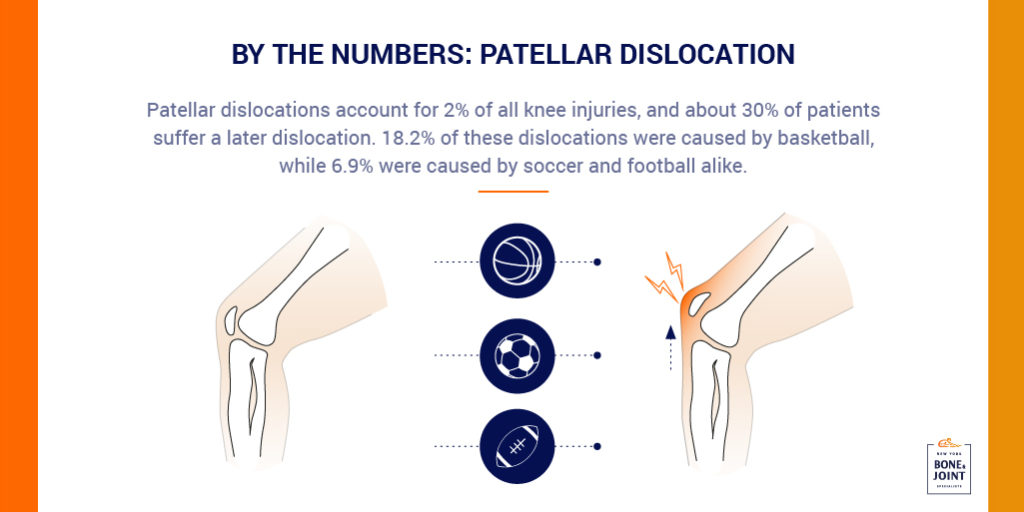A joint dislocation is a serious injury that requires immediate medical attention. When bones that normally connect at a joint are forced completely out of their normal position, the result is intense pain, visible deformity, and loss of function. Whether you’re dealing with a dislocated shoulder from a sports injury or a dislocated finger from an accident, understanding when and how to seek proper treatment can prevent long-term complications and ensure optimal recovery.
Our orthopedic specialists can help you rehabilitate from a dislocation and rebuild strength and movement in your joint. Get started on your recovery journey with the information below.
What is a Joint Dislocation? Understanding the Injury
A dislocation is the medical term for one or more of your joints being knocked out of place. These injuries are usually the result of a fall, sporting accident, or unnatural twist.
All joints can become dislocated, but the most commonly affected joints are in the elbow, finger, shoulder, knee, and hip. Dislocations are painful, prevent the joint from functioning, and need to be ‘popped back in’ by an orthopedic specialist.
When a joint dislocates, the surrounding ligaments, muscles, and other soft tissues are stretched or torn. Blood vessels and nerves may also be damaged, which is why immediate medical attention is crucial. The longer a joint remains dislocated, the greater the risk of complications, including permanent joint damage, chronic instability, and loss of function.
Dislocations can be split into two categories. Each category refers to how far the bone has pushed out of its usual place.
Luxation:
Luxation is the term used to describe a complete dislocation. This is when your bone is pushed completely out of place.
Subluxation:
Subluxation is the medical term for a partial dislocation, or where your joint is pushed somewhat out of place but is still mostly within the joint.
Common symptoms of a dislocation
Dislocations anywhere can cause:
- Pain
- Swelling
- Bruising
- The bone is visibly out of place
- Weakness and loss of function
- Potential tearing or stretching of nearby ligaments and muscles
Why do dislocations happen?
A strong force or impact can push a bone out of a joint. This is why dislocations are usually the result of a fall, sporting injury, or traumatic accident, like a car crash.
Some people are more prone to dislocations. Children and people with hypermobility tend to have weaker joints and are at the greatest risk.
Dislocated Shoulder: Most Common Joint Dislocation
Shoulder dislocations account for over 50% of all dislocation injuries. This is due to the shoulder’s ball-and-socket design, leaving the joint at greater risk of popping out of shape.
Types and Causes
Most shoulder dislocations are anterior, meaning the upper arm bone (humerus) is displaced forward and downward from the shoulder socket. Common causes include:
- Sports activities (football, basketball, volleyball)
- Falls onto an outstretched arm
- Motor vehicle accidents
- Direct impact to the shoulder
A dislocated shoulder can cause pain, numbness, and a tingling sensation down the arm. You’re also very unlikely to be able to move or use your arm in any way.
Don’t attempt to pop a dislocated shoulder back into place. You’ll need the help of an experienced orthopedic surgeon. Attempting to push the joint back into place can risk nerve damage, further incorrect joint manipulation, or fracture. Instead, place the arm in a sling or support and seek immediate medical care.
Recovery and Complications
After proper reduction, most shoulder dislocations require 2-6 weeks of immobilization followed by physical therapy. However, first-time dislocations in young athletes have a 70-90% chance of recurrence without proper rehabilitation. Complications may include rotator cuff tears, nerve damage, and chronic instability requiring surgical intervention.

Dislocated Ankle: Complex Joint Injury
Ankle dislocations are less common than other joint injuries, but more serious as they usually occur alongside other conditions, such as fractures.
Causes and Symptoms
Dislocated ankles typically result from:
- High-energy trauma (motor vehicle accidents, falls from height)
- Severe sports injuries with twisting mechanisms
- Industrial or workplace accidents
Symptoms include:
- Extreme pain and inability to bear weight
- Obvious deformity of the ankle
- Swelling and bruising
- Numbness or coldness in the foot
- Loss of pulse in the foot (medical emergency)
A dislocated ankle requires immediate medical care from a professional. Risks include multiple fractures, which can compromise blood flow to the foot. Long-term loss of blood to the limb can result in limb death. Emergency care involves returning the joint to its place, usually while you’re sedated.
Recovery may take 3-6 months, with some patients experiencing long-term arthritis.
Dislocated Knee: Rare but Serious Emergency
Dislocated knees are very uncommon, occurring in less than 1% of all dislocation injuries. However, they are very serious and require immediate medical care. The massive force required to dislocate a knee often causes multiple associated injuries.

A dislocated knee typically involves:
- Tears of multiple ligaments (ACL, PCL, MCL, LCL)
- Potential injury to the popliteal artery behind the knee
- Damage to the peroneal nerve
- Possible fractures of the surrounding bones
The most serious concern is disruption of blood flow to the lower leg, which can result in amputation if not treated within 6-8 hours. Signs of loss of blood flow to the leg may include a lack of pulse, coldness, and a blue discoloration of the skin.
Call 911 immediately for knee dislocations. We can assist with your rehabilitation, but immediate care should be performed at a medical facility. Most knee dislocations require multiple surgical procedures and extensive rehabilitation over 6-12 months.
Dislocated Finger: Common Hand Injury
Dislocated fingers are among the most common dislocated joints we see at New York Bone and Joint Specialists. Finger injuries are often the result of ball sports, weightlifting accidents, or mishaps like catching your finger in a door.
Types and Locations
Finger dislocations most commonly occur at:
- Proximal interphalangeal (PIP) joint – middle knuckle
- Distal interphalangeal (DIP) joint – end knuckle
- Metacarpophalangeal (MCP) joint – base of finger
For a dislocated finger, you can:
- Apply ice to reduce swelling
- Immobilize the finger by taping it to an adjacent finger (“buddy taping”)
- Seek medical evaluation within 24 hours
- Do not attempt to relocate the finger yourself
Simple finger dislocations can often be treated by popping the joint back in place and using supportive tape for 2-4 weeks. However, complex dislocations involving fractures or significant ligament tears may require surgical repair from one of our specialists.
Dislocated Thumb: Unique Treatment Challenges
The thumb is crucial for proper hand function, meaning immediate dislocation care is essential. Thumb dislocations can occur at the base of the thumb or at the joint with the palm.
Thumb dislocations require careful evaluation because:
- The thumb bears significant stress during gripping activities
- Improper healing can permanently affect hand function
- Some dislocations may require surgical repair to restore stability
An orthopedic specialist can return the thumb to its original placement for you. You’ll likely need a supportive strap for 3-6 weeks while the joint heals. Aftercare usually involves a course of physical therapy to restore movement and grip strength steadily before eventually returning to regular physical activity.
Emergency Treatment for Dislocations
Immediate proper care can significantly impact recovery outcomes:
- Do not attempt relocation – This can cause additional injury
- Immobilize the joint – Use a sling or splint to support the joint
- Apply ice – 15-20 minutes at a time to reduce swelling
- Manage pain – Use over-the-counter pain medication if no allergies
- Seek immediate medical care – Head to the emergency room for severe injuries

When to Call 911
Call emergency services immediately if:
- The injury involves the knee or ankle
- There’s a loss of circulation (cold, blue, or pulseless limb)
- Severe deformity or suspected fractures
- Signs of nerve damage (numbness, weakness, tingling)
- The patient is in severe distress or unconscious
Recovery and Rehabilitation After Dislocation
Recovery timelines vary depending on the type and severity of your dislocation.
Typical Recovery Timeline
- Finger dislocations: 2-6 weeks
- Shoulder dislocations: 6-12 weeks for first-time, longer for recurrent
- Ankle dislocations: 3-6 months
- Knee dislocations: 6-12 months with extensive rehabilitation
Recovery strategies usually last a few weeks. Our specialists will work with you to help steadily rebuild strength and movement in the joint. Depending on recovery success, you can expect to return to full physical activity after three to four months.
Preventing Dislocation Injuries
You can reduce the risk of dislocation by strengthening your joints and wearing appropriate safety clothing if playing sports or working in a physical environment. Consider:
- Proper conditioning – Strengthen muscles around vulnerable joints
- Protective equipment – Use appropriate bracing or padding for sports
- Technique training – Learn proper falling and movement techniques
- Early intervention – Address joint instability before it leads to dislocation
- Activity modification – Avoid high-risk activities if prone to dislocations
Frequently Asked Questions About Dislocations
How do I know if my shoulder is dislocated?
A dislocated shoulder causes severe immediate pain, visible deformity of the shoulder contour, and complete inability to move the arm. The shoulder may appear “squared off” or flattened compared to the uninjured side. Any suspected shoulder dislocation requires immediate medical attention.
What should I do for a dislocated finger?
Apply ice, immobilize the finger by buddy-taping it to an adjacent finger, and seek medical evaluation within 24 hours. Do not attempt to relocate the finger yourself, as this can cause additional injury to ligaments, blood vessels, or nerves.
Can I treat a dislocated thumb at home?
No, dislocated thumbs require professional medical evaluation and treatment due to their importance in hand function. Improper treatment can lead to chronic instability and permanent loss of grip strength.
How serious is a dislocated ankle?
Dislocated ankles are serious injuries that often involve fractures and can threaten limb survival if blood flow is compromised. They always require emergency medical treatment and typically need surgical repair.
Is a dislocated knee a medical emergency?
Yes, dislocated knees are always medical emergencies requiring immediate 911 response. The injury can damage major blood vessels and nerves, potentially leading to amputation if not treated within hours.
What type of doctor treats shoulder dislocations?
Orthopedic surgeons and sports medicine physicians are best qualified to treat shoulder dislocations, especially recurrent cases. Emergency physicians handle initial treatment, but follow-up with a specialist is typically necessary.












